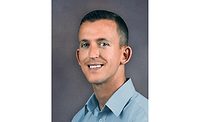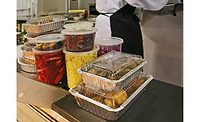Auburn University researchers work to ensure safety of local foods movement

The local foods movement continues to grow in the U.S., with an increasing number of consumers wanting to know where their food comes from and buying it at farmers markets and through community-supported agriculture programs. It’s a social, face-to-face process that creates a connection with the families producing it.
One of the obstacles to further growth, however, is making sure that locally produced foods are produced and distributed safely.
Working with a more-than $4 million grant from the USDA National Institute of Food and Agriculture, Auburn University researchers are addressing the gaps between knowledge and practice in the production and distribution of local and regional foods, with the ultimate goal of ensuring a more secure food chain.
With recent trends showing that consumers prefer purchasing meats from local producers rather than large commercial facilities, Christy Bratcher—lead researcher, College of Agriculture professor and director of the Food Systems Institute—is working to make sure this meat is safe to eat.
Bratcher began the research project by going to farms where cattle are raised for commercial harvests and for direct sales.
“We looked at E. coli prevalence in addition to feeding, bedding and working chutes, along with environmental swabbing,” she said. “We collected fecal samples and water samples from any streams or ponds that those animals had access to, and we found higher levels of E. coli in water to which cattle had access, which wasn’t a surprise.”
The E. coli investigated for this research project do not typically harm cattle but certain species of E. coli can be pathogenic to humans.
The biggest problem Bratcher faced was making sure local producers kept their facilities sanitary. Her research colleague for this portion of the study was Manpreet Singh, formerly of Purdue University, but now at the University of Georgia. They looked at federally inspected small regional facilities, state-inspected very small regional facilities and very small local facilities.
“While all had E. coli positive samples prior to processing, the concern is the overall reduction in the pathogen by the time all of the harvesting steps have been done and the carcass reaches the final chilling step. For the small and very small regional facilities, there was no detectable E. coli at the end of the harvest process, while in the very small local facilities, there were still some positive carcasses.”
She says large production facilities are designed to and have the monetary capital for investment in intervention strategies, such as steam pasteurization cabinets to make sure E. coli and other pathogens aren’t transferred from feces and intestinal contents to the meat.
“Small and very small facilities do not have as many resources, and, while there are definitely fairly inexpensive ways to assure a safe and wholesome product, many of the facilities have untrained employees who could use some extra training in processing practices and a clear understanding that their every activity in the processing facility has a potential to impact the safety of the product for the end consumer,” Bratcher said.
To assist local processors in reducing the amount of E. coli transferred to beef in a harvest facility, Bratcher’s team put together a series of Alabama Cooperative Extension System talks on sanitary design to present to producers and packaging plants.
“We gave them suggestions on steps they should take when harvesting an animal to make sure everything is sanitary,” she said.
Bratcher also has partnered with the Auburn University Lambert-Powell Meat Laboratory staff and Regional Extension Agent Alex Tigue to develop a butchery school to train producers on proper sanitary design in facilities and education for processing meat. They hope to implement the school in 2019.
The original research project began in 2012 to determine the presence of E. coli in beef cattle. However, while conducting the research, the presence of poultry animals in close proximity to cattle prompted Bratcher and her team to expand their research to Salmonella as well.
Researchers found that Salmonella was present on cattle farms where chickens and turkeys were present. “We found some linkages between the amount of Salmonella that was on those farms and the amount of Salmonella that was in the water, and we also picked up positive samples where cattle were located,” she said.
Bratcher partnered with fellow Auburn researchers Stuart Price in the College of Veterinary Medicine and Ken Macklin in the Department of Poultry Science through the Food Systems Institute’s Salmonella Working Group to determine how Salmonella was spreading across animals in close proximity.
She has also teamed up with USDA Agricultural Research Service researchers Jeff Carroll, Rand Broadway and Nicole Burdick Sanchez to determine routes of transmission of Salmonella in cattle from the gastrointestinal tract into the meat through atypical carcass reservoirs such as the lymph nodes and synovial fluid in the joints.
“We found that cattle infected with Salmonella sometimes do not appear sick enough for anyone to realize that they shouldn’t be harvested for food,” Bratcher said. “So we want to find out if there’s anything we can do to reduce the amount of Salmonella in those animals.”
Bratcher hopes her research efforts will lead to a safer food supply so consumers can be guaranteed they’re eating a healthy product, whether they buy meat from a local grocery store or farmer’s market, or from a chain store.
“We may never be able to completely solve the problem of pathogen translocation from the environment or animals into meat, but we can develop ways to reduce it,” Bratcher said.
Another member of the research team—Michelle Worosz, an Auburn professor of rural sociology—is evaluating why consumers prefer to buy local meat.
“The ‘local is safer’ movement began in the early 2000s and then, when the recession hit in 2008, people wanted to invest in their local communities,” said Worosz, who is studying where consumers are getting their information regarding the “local is safer” movement. She expects to have results of her surveys in late 2019.
Source: Auburn University
Looking for a reprint of this article?
From high-res PDFs to custom plaques, order your copy today!






